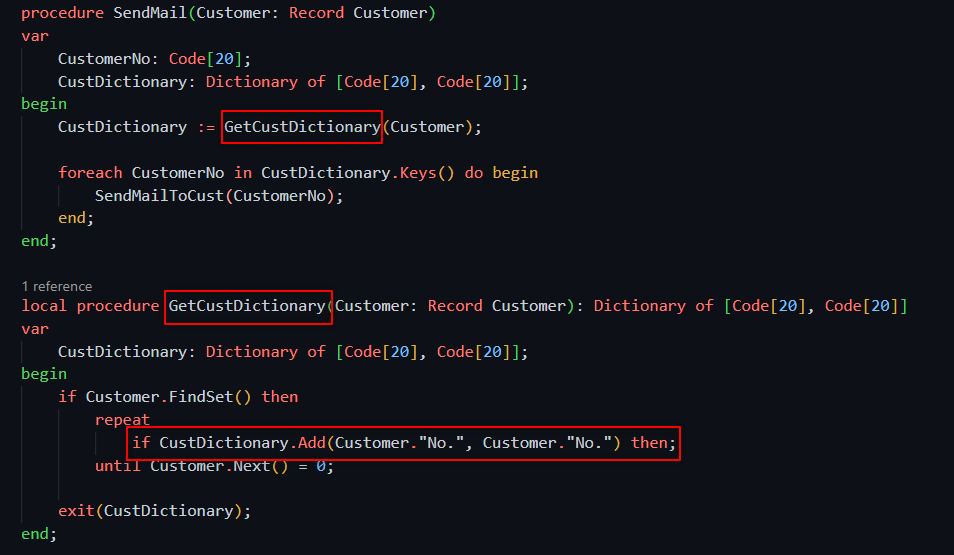The Dictionary object in AL is one of the most efficient tools for handling key-value pairs dynamically, especially useful when working with integrations, lookups, mappings, or API responses.
In this blog, we’ll explore:
- Why to use Dictionary
- How to implement it
- Common use cases
- Real AL code examples for each operation

📌 Why Dictionary?
- Stores key-value pairs of any supported AL data types
- Cleaner and faster than arrays for associative logic
- Allows methods like:
🔄 Real Use Case #1:Tracking Sales Orders
What’s happening:
- Each Sales Order No maps to a List of Item Nos
- Nested
foreach used to iterate through keys and item lists - Clean handling of sales order/item mapping
Also shown:
- Using
.Values to extract the entire list of values
- Efficient looping over lists in the dictionary
🧠 Real Use Case #2: General Dictionary Operations
Let’s break down the core operations:
📌 Declaration:
📌 Useful Methods:

This example shows:
- Updating a value and capturing the previous value with
.Set()
- Using
.Remove() to clean entries
- Combining
.Get() and .ContainsKey() for safe lookups
- Using
@Multiline to build rich message outputs
🧪 Best Practices
✔️ Always use ContainsKey() before using .Get() to avoid runtime errors
✔️ Use .Clear() when reusing the dictionary in new context
✔️ Prefer Dictionary over temporary tables for simpler runtime needs
✔️ Document key and value types for easier collaboration
📈 Wrap-Up
Whether you're mapping data from external systems, processing JSON responses, or simplifying your AL logic — the Dictionary object is a must-know tool for every #MSDyn365BC developer.
It's fast, type-safe, and significantly improves code readability and maintainability.
📌 Pro Tip: Combine Dictionary with JsonObject for advanced integration logic.
🙋♂️ Have you used Dictionary in your BC projects? Share your best tips or scenarios in the comments!



